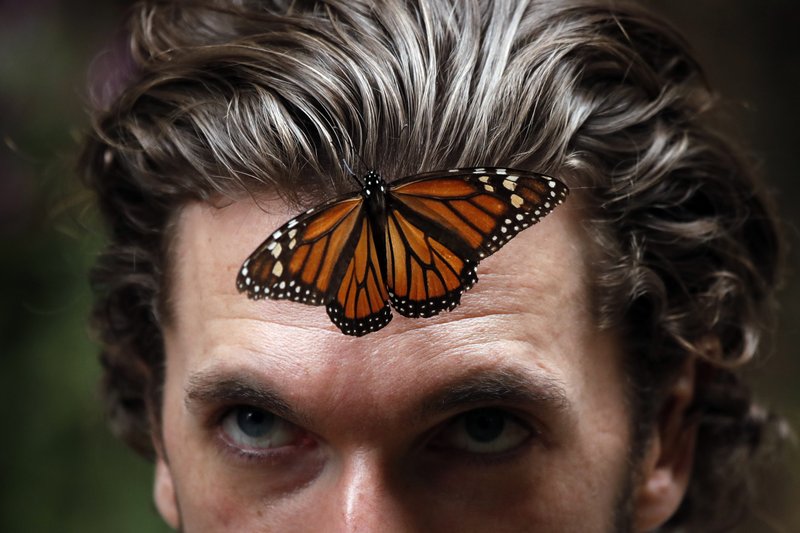National
Illegal logging drops in Monarch butterfly wintering grounds

MEXICO CITY (AP) — Tree loss in the wintering grounds of the monarch butterfly in central Mexico is down by about 25% this year compared to last year as a sharp drop in Illegal logging more than made up from an increase in tree deaths due to lack of water or disease, experts said Monday.
Monarchs need healthy tree cover to protect them rain or cold weather in the pine and fir mountaintop forests in Mexico where they spend the winter. Millions of monarchs make the 3,400-mile (5,500-kilometer) migration from the United States and Canada, and then return, each year, though no single butterfly lives to make the complete trip.
Environmentalists and officials in Mexico expect a strong turnout this year of monarchs, in part because of last year’s population rebound.
Mexico has clamped down on illegal logging, which has fallen to about one-third last year’s level. Total tree loss from disease, drought, logging and other causes is down by an overall 25% from last year.
Jorge Rickards of the World Wildlife Fund said “it is now small-scale logging, isolated trees … we’re not seeing the big, clear-cut spaces we saw decade ago.”
But officials said the number of personnel guarding the reserve west of Mexico City has been cut from a high of about 180 to about 25 as part of a government austerity and reorganization program.
And environmentalist and poet Homero Aridjis, who grew up near the reserve, said locals are concerned about ongoing “salvage” logging of trees purportedly killed by bark beetles, disease or drought.
“Based on this justification they have extracted way too many trees from the reserve and there is no way to know for sure if the trees were really diseased or infested,” Aridjis wrote. “We have seen photos of trucks continuously passing through Angangueo (a town near the reserve) loaded with wood.”
Monarchs usually arrive in Mexico by the Nov. 1 Day of the Dead holiday, but have been delayed by late rains this year. In old times, Mexican villagers associated the annual arrival of the butterflies with the returning spirits of the dead.
Gloria Tavera, who oversees the region for the Commission on Natural Protected areas, said “we hope this year’s contingent will be as good as last year’s,” in part because of efforts to plant gardens containing nectar-bearing plants — which the monarchs need to store up energy — along their migratory routes. Such plantings include types of daisies and Mexican sunflowers.
Last year, monarchs covered about 14.95 acres (6.05 hectares) of pine and fir forests, up from 6.12 acres (2.48 hectares) the previous year.
The butterflies are far from out of trouble; as recently as 1996-1997 they covered 44 acres (18 hectares) of forest. Because there are millions — and they cluster tightly on trees — it is easier for biologists to count them by the area they cover.
Monarchs were sighted crossing the border into Mexico in early October. They are now probably just a few hundred miles (kilometers) from the protected reserve where they winter
But because monarchs prefer to cluster in trees and wait until it stops raining, they will probably arrive around the end of the first week of November, as they did last year.







